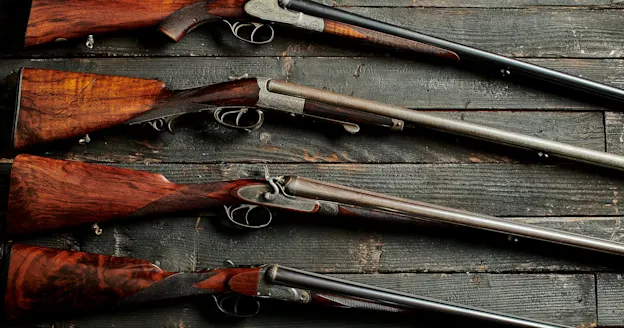We’re into the heart of the spring hunt now, with seasons open in all but a handful of states, weather getting more pleasant by the day, and turkeys going about their breeding business in full swing. All of which means you should get yourself into the turkey woods ASAP—as in tomorrow. Why tomorrow? Because April 30th is the next must-hunt date in our 2024 Best Days of the Strut series
. If you’ve got private ground to hunt, more power to you. But if you don’t, get out there just the same.
One of the great things about turkey hunting is it’s often possible to have a quality hunt on public ground—something today’s expert has proven again and again. F&S hunting editor Will Brantley has tagged gobblers all across the country, but his favorite haunts are public tracts in Kentucky and Tennessee. Brantley’s savvy approach to hunting pressured turkeys has made him consistently successful regardless of location, and his tried-and-true methods are particularly effective on big-woods birds that have heard a call or three.
**Related: Best Turkey Shoguns for 2024 Season
**
The Pro: Will Brantley, Kentucky

Brantley with a big Eastern tom taken on public land. Will Brantley
F&S hunting editor Will Brantley is currently enjoying his 28th spring chasing gobblers. The Kentucky native hunts extensively in the Bluegrass State and neighboring Tennessee each fall, but he also travels widely, with annual hunts in Texas and Nebraska. He has tagged gobblers in 11 different states and has killed several Grand Slams, including one with archery gear. One thing is for sure: You won’t find a more gobbler-obsessed hunter.
The Strut Stage: Immediate Post Breeding
Biologists have long documented the phenomenon of “gobbling peaks” that coincide with certain turkey flock behavior, and Brantley has witnessed this in the birds he hunts near his home in Kentucky. “I hunt most every day from our April 15th opener through to the end,” he says. “And there’s definitely good gobbling at the opener. Then from about April 18 through about the 25th, I’d swear there isn’t a tom within a mile of some of my best spots,” he laughs. “But give it a few days, and it definitely picks up again, as hens start nesting and gobblers find themselves alone again. That’s one reason I picked the 30th as my day, but I also chose it because it’s a Tuesday; I am primarily a public-land hunter, and I just see less competition and pressure from other hunters on a weekday.”
Expert Tactic for April 30: Slip In on a Public-Land Gobbler

Set up within gun range of a ridge top and wait for a tom to crest the hill. Billy Pope: Alabama DNR
If you want to up your odds on turkeys that have heard a lot of calling and have been bumped by their share of hunters, Brantley contends that your ears and OnX are the two key tools for making that happen. “Assuming I don’t have a bird roosted the night before, I have a milk run of listening spots that I’ll visit that allow me to hear a distant tom gobbling,” he says. “I don’t bang on a box call or use a lot of locator calls, trying to pull a gobble out of a bird. I’m convinced that public-land birds have heard all that stuff too much for it to be consistently successful. Instead, I just pull up to a high spot, settle in for a bit and listen for a tom that’s firing up on his own. If I haven’t heard one after awhile, I move to the next spot.”
When Brantley finally hears a gobble, he skedaddles to get close to the bird. “Here’s where OnX
is such a great tool,” he says. “I beat feet to close the distance, and then when I’m pretty certain I know where the bird is, I drop an OnX pin on the corresponding topo feature on the map. That helps me identify what my best setup spot is. I’m looking for a relatively flat spot near a ridge top where the bird will come to strut and gobble when I call.”
Brantley says that roosted toms in his area are typically just off the break of a ridgetop, and he looks to get about 30 yard off that break—but on the opposite side of wear the turkey is. “This way, if he flies down and comes my way, he’ll be in gun range as soon as I see him top the hill. If I set up any closer to that break, he’s apt to spot me move my gun. If I set up farther than that, he can sit there just out of gun range on the crest and not budge an inch. Also, and this is important, once I pick my set-up spot, I don’t make a single turkey call until I’ve heard that bird gobble on his own. That’s my proof that I’ve gotten tight to the bird without bumping him. Once he’s gobbled on his own, I start working him with a mouth call; at that distance I feel that any movement you make with a box or pot call is just something he’s going to spot and spook from.”
**Read Next: Best Turkey Calls for the 2024 Season
**






